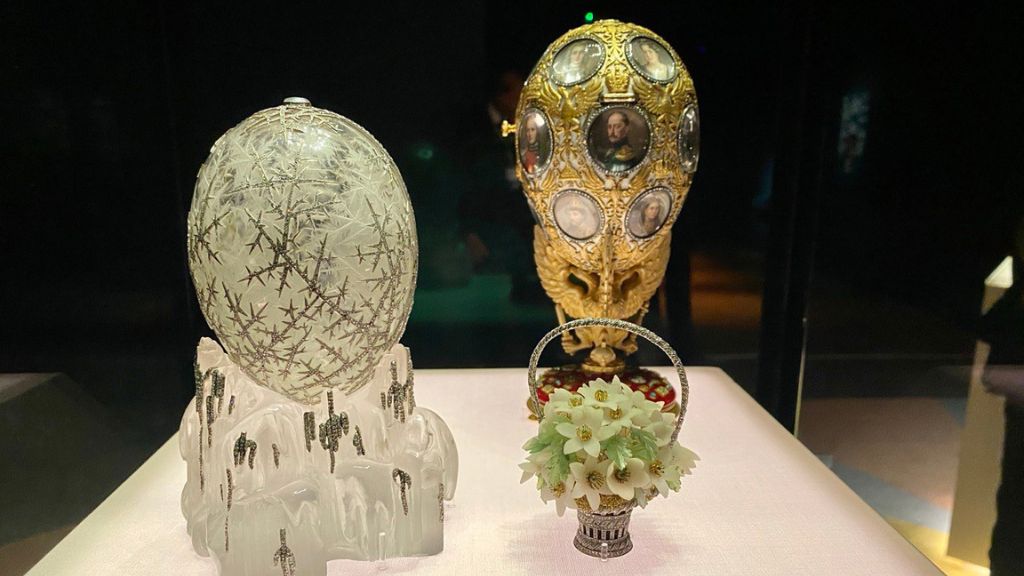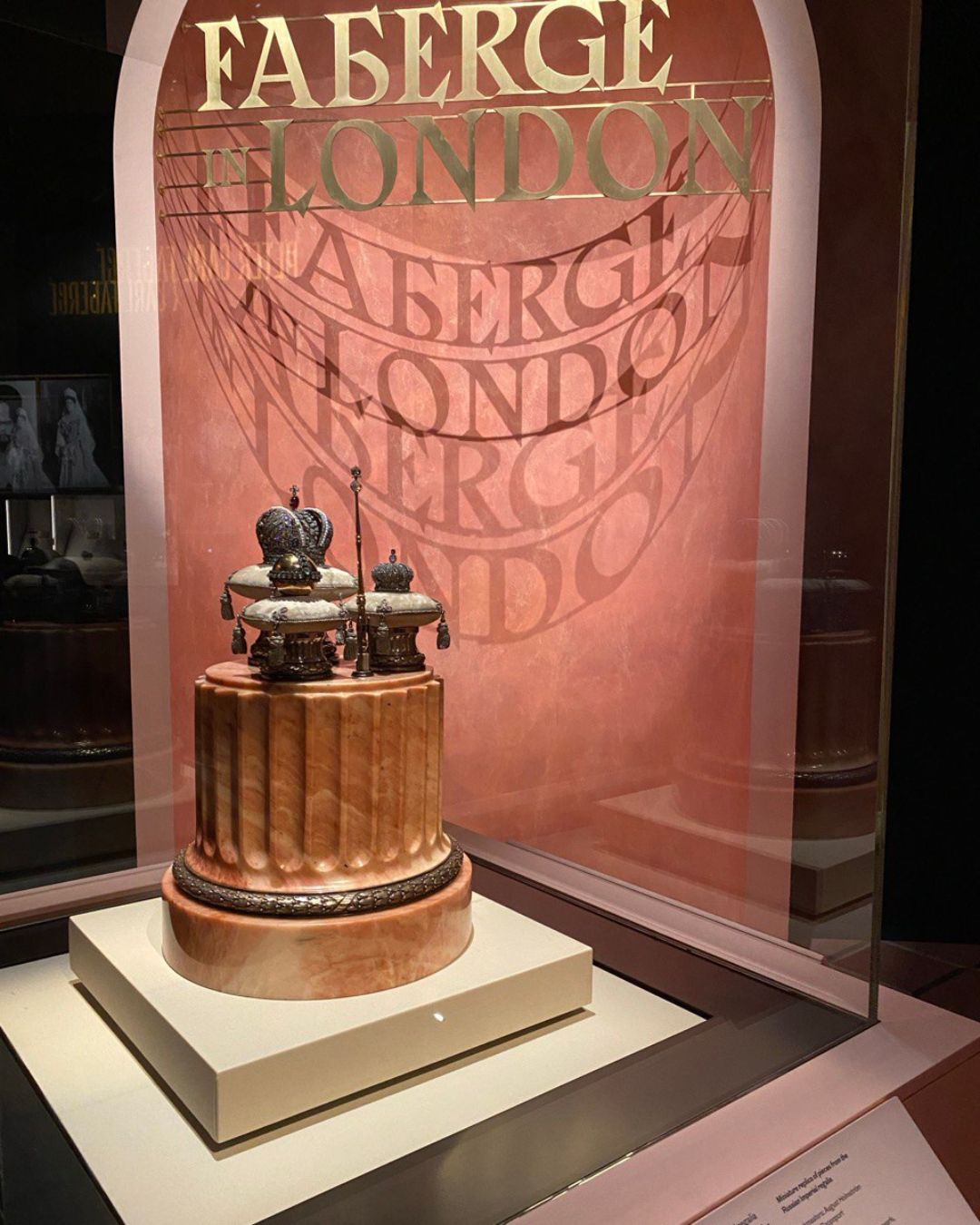
Fabergé and Russian heritage in London: the wedding of Olivia Henson to the Duke of Westminster
Today, on 7 June 2024, Olivia Henson, the new Duchess of Westminster, adorned her head with a tiara by the Russian jeweller Fabergé at her wedding in Chester Cathedral. Faberge works form a substantial part of the Royal Collection, known for its vast and invaluable treasures.
This particular tiara, one of the most precious in the Westminster collection, was crafted by the legendary Russian jeweller in 1906. It features branches of myrtle, a symbol of love, made from silver and red gold and embellished with diamonds. The myrtle wreath, associated with the goddess of love Aphrodite, accentuates the romantic and elegant appearance of its wearer.
The tiara’s history adds to its significance: it was created by Fabergé for the wedding of Lord Hugh Grosvenor and Lady Mabel Crichton. Since then, the tiara has graced the heads of Westminster brides, including Viola Grosvenor in 1946, Olivia’s sister-in-law Lady Tamara in 2004, and Lady Rosanna Grimston in 2008.

The exhibition of Fabergé’s works. Photo: Afisha.London
The rarity of this tiara is underscored by the fact that Fabergé, famous for his embellished Easter eggs, seldom created tiaras. The Westminster family owns another Fabergé tiara, the Cyclamen Tiara, dating back to 1905.
The family’s Russian heritage is also reflected in their lineage: the Duke’s mother, Natalia, is a descendant of Nicholas I and the poet Alexander Pushkin. At her wedding, the groom’s mother wore the Bagration Spinel Tiara, one of the most splendid in the family collection.
Read more: Celebrating 225 years of Pushkin: the epigrams that shocked society
Invalid slider ID or alias.
Traditionally, tiaras are worn only by married women or brides on their wedding day. At aristocratic weddings like this, only the bride wears a tiara, whereas at state banquets and coronations, such as the wedding of Jordan’s Crown Prince Hussein, all married women are invited to wear tiaras.
- The exhibition of Fabergé’s works. Photo: Afisha.London
- The exhibition of Fabergé’s works. Photo: Afisha.London
Fabergé’s influence in London
The Royal Fabergé Collection in London is one of the largest, comprising numerous masterpieces of jewellery art. The British Royal Family began collecting Fabergé pieces during the reign of King Edward VII, and today, the collection boasts over 600 items, including the famous Easter eggs and decorative objects.
Read more: Fabergé — the legendary jewellery firm in London and St. Petersburg
Buckingham Palace houses a special exhibition dedicated to Fabergé’s works. This exhibition features not only Easter eggs but also miniature figurines, jewellery, and other items showcasing the virtuoso craftsmanship of Russian jewellers. Fabergé pieces are often loaned from this collection for exhibitions, the most recent and largest of which concluded in May 2022.
Fabergé’s works significantly influenced British jewellers of the early 20th century. The mastery and innovation embodied in Fabergé’s creations inspired many artisans to produce their unique jewellery and decorative items. The Romanov family and the British Royal Family were closely connected, with many Fabergé items exchanged as gifts between monarchs. These pieces are now not only artistic treasures but also historical artefacts, testifying to the close ties between the two dynasties.

The exhibition of Fabergé’s works. Photo: Afisha.London
London regularly hosts exhibitions and auctions featuring Fabergé items. These events attract collectors and art enthusiasts from around the world, reaffirming the enduring value and popularity of the great jeweller’s works.
Cover photo: Peter Byrne / PA
Read more:
The great and terrible English pirates: the romanticised image of sea wolves
Yehudi Menuhin in London: prodigy, violinist and goodwill ambassador
Exploring Malevich: Locations and Insights into His Revolutionary Art
SUBSCRIBE
Receive our digest once a week with quality Russian events and articles









